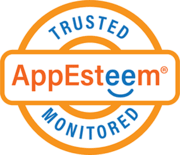As technology evolves, machines are taking PC optimization into their own hands—literally. Automation and artificial intelligence are letting our devices optimize themselves. Traditional manual optimization methods are being replaced by AI-powered tools that learn from user behavior and system performance. In 2025, artificial intelligence (AI), machine learning (ML), cloud computing, and faster internet speeds will continue to revolutionize how we maintain and enhance PC performance.
Let’s take a look at some of the trends shaping the future of PC optimization, including AI-driven enhancements, cloud-based performance management, and internet speeds in boosting computing power.
Artificial Intelligence & Machine Learning in PC Optimization
Artificial intelligence (AI) and machine learning (ML) are redefining PC optimization by making computers more intelligent and adaptive. Unlike traditional performance-enhancing tools that require manual configuration, AI-driven solutions analyze system performance in real-time and make automatic adjustments to improve efficiency. AI-compatible computers and laptops are already available on the market (though, like every emerging technology, they come with benefits and pitfalls).
First, let’s look at some of the benefits.
How AI and ML are changing PC optimization
AI and ML algorithms can process vast amounts of data at lightning speed, allowing them to:
- Detect bottlenecks in system performance and fix them before they even get a chance to slow down the PC
- Optimize hardware and software settings based on real-time usage patterns
- Improve power efficiency by adjusting resource allocation, based on your workload intensity
- Automate maintenance tasks like disk cleanup, driver updates, and background app management
AI-driven optimization ensures that PCs are running at peak efficiency without requiring constant manual intervention. However, AI is still occasionally prone to errors, and there are ongoing discussions surrounding the use of AI and data privacy concerns. AI-powered PCs might simply be overkill for the casual user.
AI-powered performance enhancements
The most useful aspect of integrating AI with PC optimization is the development of self-learning algorithms, which can predict and prevent issues before they happen. The following are examples of some key AI-driven improvements.
Intelligent resource allocation
Modern AI-based systems can dynamically allocate CPU, GPU, and RAM resources based on real-time workloads. Think of this as similar to putting a car into sport mode. For example:
- Gaming Mode: AI optimizes CPU and GPU usage to prioritize high-frame-rate performance while reducing background activity.
- Work Mode: When running productivity software, AI ensures that memory is allocated efficiently to prevent slowdowns.
- Battery Saver Mode: AI adjusts power consumption to extend battery life in laptops without compromising performance.
Predictive maintenance
AI is also good at identifying potential system failures before they happen by analyzing performance metrics such as:
- CPU and GPU temperature trends
- Hard drive health and potential disk failures
- Memory usage spikes that indicate inefficiencies
By alerting users to potential issues before they cause major disruptions, AI helps prevent system crashes and data loss—saving you frustration, even if you haven’t saved your game.
Adaptive overclocking and cooling
Overclocking has traditionally been a manual process that requires technical knowledge. In 2025, AI-powered optimization tools are capable of:
- Automatically adjusting CPU and GPU clock speeds to improve performance when needed
- Regulating cooling fans and liquid cooling systems to maintain optimal temperatures
- Preventing overheating and hardware damage by balancing power and performance
This means users can enjoy boosted performance without risking system instability.
AI-driven background process management
Many PCs slow down because of unnecessary background applications consuming resources. Without software to help you identify these applications, it can be hard to figure out what it is that’s slowing down your computer. AI-based PC optimization tools can:
- Identify and close unused background processes in real time
- Prioritize active applications to ensure smooth multitasking
- Reduce startup time by disabling unneeded startup programs
With AI managing system resources more efficiently, users no longer have to manually close programs to free up memory and processing power.
Cloud-based PC Optimization
Cloud computing is playing a crucial role in AI-based PC optimization. In 2025, cloud-based optimization tools are expected to replace traditional software by:
- Running intensive tasks in the cloud rather than consuming local system resources
- Providing real-time analytics to detect and fix performance issues remotely
- Allowing for seamless updates and optimizations without the need for user intervention
Companies like Microsoft and NVIDIA are already investing heavily in cloud-based optimization solutions. Services such as NVIDIA GeForce Now and Microsoft’s Cloud PC are early examples of how cloud computing will revolutionize performance tuning – it’s not a matter of if, it’s a matter of when.
Integration of 5G and Faster Internet Speeds for PC Optimization
The widespread adoption of 5G and ultra-fast broadband internet is significantly enhancing PC optimization. Faster internet speeds allow users to access cloud computing resources more efficiently and improve real-time performance.
For instance, cloud-based gaming and high-performance remote desktops are becoming more accessible. This trend is particularly important for those users, such as young people, who want powerful computing resources but can’t invest in expensive upgrades.
Better hardware for enhanced performance
While software optimization is advancing, hardware improvements are still important. In 2025, we are seeing:
- More efficient processors with built-in AI cores to optimize workloads
- Faster SSDs and RAM for better multitasking and reduced load times
- Advanced GPUs designed specifically for AI and machine learning applications
With these advancements, users can expect a smoother computing experience with lower power consumption and better heat management. This is particularly good news for gamers, as games become more advanced and demand more from the systems they run on.
The Role of Automation in Future PC Optimization
Automation is becoming more of a key factor in optimizing PC performance. AI-driven tools now allow users to automate essential (and often boring) maintenance tasks, including:
- Automatic driver updates: Ensuring compatibility with the latest hardware and software
- Predictive system maintenance: To identify potential issues before they cause problems
- Automated resource allocation: Prioritizing CPU, RAM, and GPU usage based on application needs
As automation improves, users will spend less time troubleshooting and more time actually getting to enjoy using their computers, be it for work, education, or leisure.
PC Optimization for Specific Use Cases
PC optimization is no longer a one-size-fits-all approach. In 2025, optimizations are tailored to specific user needs, ensuring the best possible performance for different applications.
Gaming
Gaming PCs are benefiting from advanced optimization techniques, including:
- AI-driven game optimization that adjusts settings based on hardware capabilities
- Cloud gaming improvements to reduce the need for high-end, complex gaming rigs
- Real-time performance enhancements to minimize lag and stuttering
With these advancements, gamers can enjoy a seamless experience without constantly tweaking settings, even if they don’t have the latest hardware.
Content creation
Content creators need powerful PCs for video editing, 3D rendering, and graphic design. PC optimization for creators in 2025 includes:
- AI-assisted editing tools that speed up rendering and post-production
- Optimized storage management for handling large video and image files efficiently
- High-performance cooling solutions to turn down the heat and keep hardware running at peak efficiency (great news for the poolside influencers)
These improvements help creators work faster and more efficiently, saving valuable time and resources.
Can iOS Users Compete with PC Optimization in 2025?
Apple’s macOS ecosystem has always been behind Windows PCs in terms of the options for customization and optimization. However, in 2025, Apple is making strides in catching up by:
- Integrating AI-based performance management to enhance battery life and processing speed
- Leveraging cloud computing for intensive tasks like video editing and software development
- Improving macOS hardware with ARM-based processors that rival high-end PC performance
While iOS and macOS devices are still more locked down than Windows PCs, Apple’s focus on optimization ensures that Mac users can still experience top-tier performance.
Aim for Optimal
PC optimization ensures your system runs at peak performance, and cybersecurity ensures that your personal information stays yours. As AI increasingly provides new opportunities for PC optimization, we’re integrating it into our software. System Mechanic Ultimate Defense not only safeguards your PC from malware, phishing attacks, and online threats; it keeps your PC running like new, and uses AI to optimize scans and repairs when it’s most convenient for you. Talk to our support team for more optimization and security tips.








